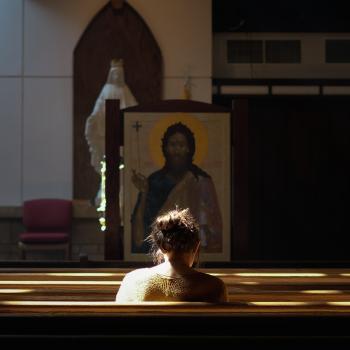How about greater involvement from lay people in the Church?
The editors at America explain:
No one should anticipate changes in the existing discipline on celibacy or in the teaching on women’s ordination, but there are other ways to reform church structures to allow women and married men to participate in church governance. One proposal is simply to change canon law to admit laypeople to the College of Cardinals. The church could thereby continue its all-male priesthood, yet transform the “men’s club” into a church with a face that more resembles the people of God described in the documents of the Second Vatican Council.
A more realistic proposal, however, would entail two steps: First, reorganize diocesan offices so that laypeople constitute at least half of the bishop’s principal advisers. (Increasing numbers of laity have already been hired as staff in many U.S. dioceses.) Second, create a new body, an international council of laypersons to share functions with the College of Cardinals. After attrition among the cardinals, each of the two bodies eventually could have 100 members. The lay members would be Catholics who love the church and are recognized for sound Christian judgment. They would come from a variety of occupations—education, health, religious life, law, the arts, business, science, government and labor. Church leadership would not be limited to elderly men but would be expanded to include men and women, married and unmarried, of different ages. Wisdom, after all, can be found from a multitude of sources, something that St. Benedict acknowledged when he urged an abbot at a monastery to solicit the opinion of even the youngest member of the community: “By the Lord’s inspiration, it is often a younger person who knows what is best.”
Some members of the council would direct Vatican offices; others would come to Rome for regular consultation. Membership could be proportionate to the Catholic populations throughout the world, chosen for a specified term on the recommendation of grass-roots representative caucuses of clergy and laity. The combined college and council would share three functions: administer the Vatican offices, advise the pope and select his successor.
Related: Washington’s Cardinal Wuerl on the important role of the laity in the Church.












